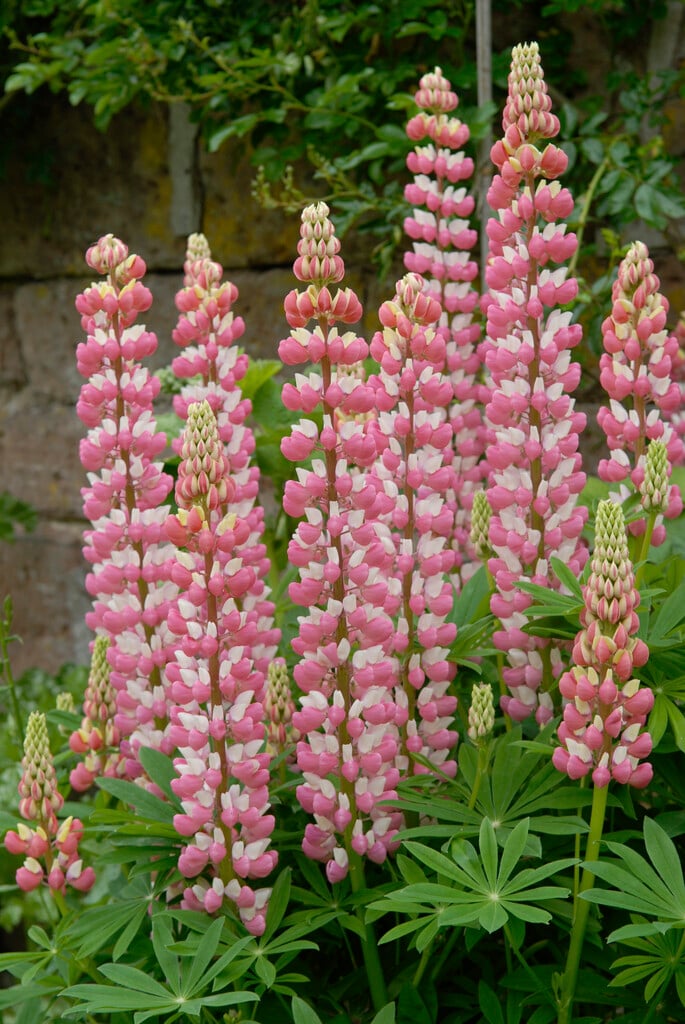Size
Ultimate height
0.5–1 metresTime to ultimate height
2–5 yearsUltimate spread
0.1–0.5 metresGrowing conditions
Moisture
Well–drainedpH
Acid, NeutralColour & scent
| Stem | Flower | Foliage | Fruit | |
| Spring | Green | |||
|---|---|---|---|---|
| Summer | Pink White | Green | ||
| Autumn | ||||
| Winter |
Position
- Full sun
- Partial shade
Aspect
South–facing or North–facing or East–facing
Exposure
Exposed or Sheltered Hardiness
H5Botanical details
- Family
- Fabaceae
- Native to GB / Ireland
- No
- Foliage
- Deciduous
- Habit
- Bushy
- Potentially harmful
- Harmful if eaten. Wear gloves and other protective equipment when handling. TOXIC to pets if eaten (dogs, cats, rabbits, tortoises) - see the HTA guide to potentially harmful plants for further information and useful contact numbers
- Genus
Lupinus can be annuals, perennials or shrubs, with palmate leaves and showy terminal racemes of pea-like flowers
- Name status
Accepted
How to grow
Cultivation
Grow in moderately fertile, humus-rich, light, moist but well-drained soil in full sun or light, dappled shade. See lupin cultivation This plant was included in the RHS Lupinus (lupin) trial 2024-2025 https://www.rhs.org.uk/plants/trials-awards/plant-trial-results/lupinus
Propagation
Propagate by seed sown in situ in late spring or in seedbeds and transplanted to final flowering site in autumn
Suggested planting locations and garden types
- Cottage and informal garden
- City and courtyard gardens
- Coastal
- Flower borders and beds
Pruning
Deadhead to encourage a second flush of flowers
Pests
May be susceptible to slugs and lupin aphid
Diseases
May be susceptible to powdery mildews, rots, a leaf spot and a virus
Get involved
The Royal Horticultural Society is the UK’s leading gardening charity. We aim to enrich everyone’s life through plants, and make the UK a greener and more beautiful place.
